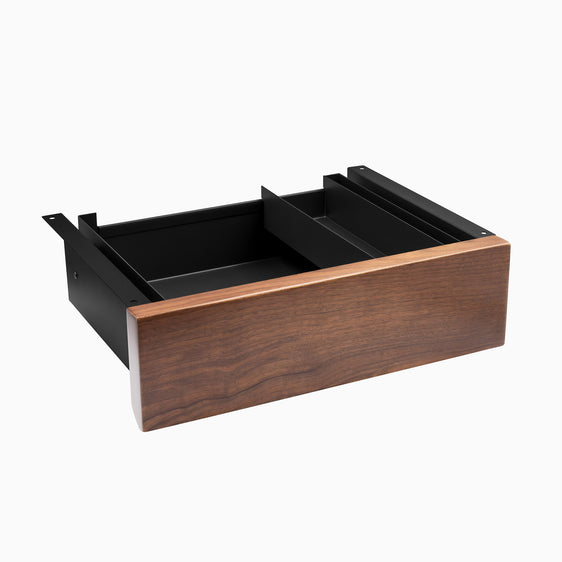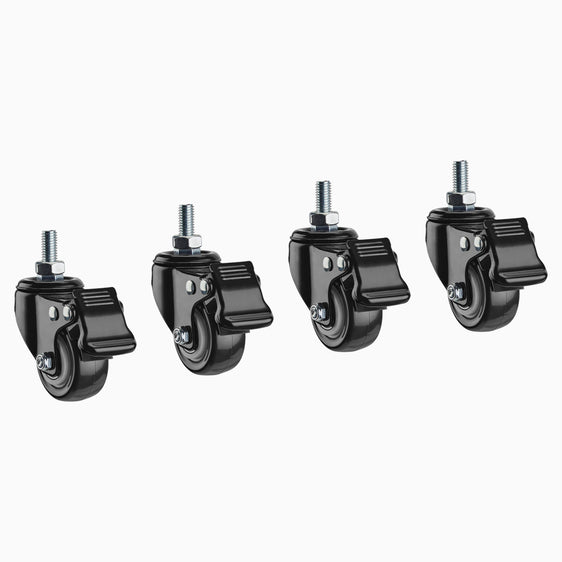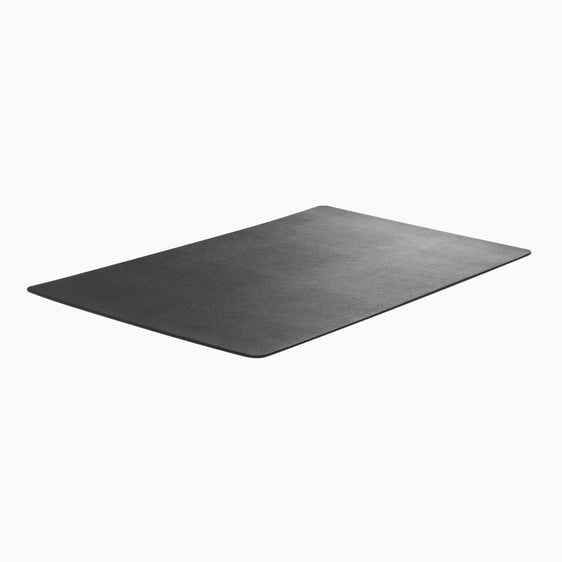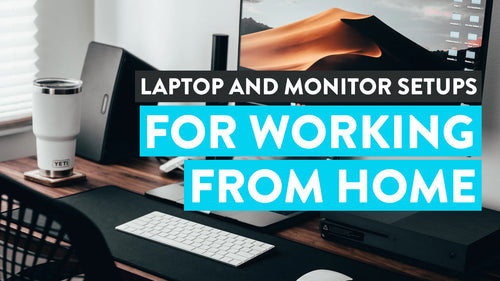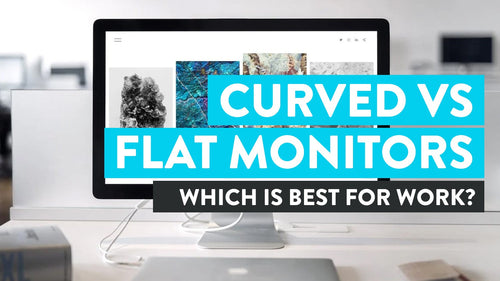
News
Curved Computer Monitors: Exploring The Pros and Cons
Hayden AdamsIn recent years, curved computer monitors have gained popularity, with their unique design and immersive viewing experience finally offering something a little different to the ubiquitous flat screen. Curved screens provide the illusion that they ‘wrap around’ the users field of vision, thus providing a wider field of view and as a result, a more engaging visual experience.
However, curved monitors tend to come with their own set of advantages and disadvantages, and just like any new innovation, you might not yet be sure if they’re for you. In this article, we will explore the pros and cons of curved monitors to help you make an informed decision when considering a new display for your computer setup.
Curved Monitor vs. Flat Monitor: What Are The Differences?

Before we dive too deep into the pros and cons, it’s important to identify some of the key considerations when choosing a monitor. Luckily, these are highlighted neatly when we consider some of the key differences between curved monitors and flat monitor screens.
When comparing curved and flat monitors, it ultimately boils down to personal preference, and perhaps most importantly, what you actually use your computer for. Though a flat monitor may be preferable for gaming or streaming in some cases, many will value their curved monitors more highly because they offer a more immersive experience, comfort and minimised distortion. Flat monitors are compatible with a wider variety of accessories, which for some may be important for their work or gaming experience.
Mounts for Curved Monitors
When it comes to mounting options, flat monitors generally have more flexibility due to the wider availability of mounting solutions. A flat monitor can be easily mounted on walls, monitor arms, or other mounting mechanisms, providing users with a wide range of choices.
{{ spec_single_eco_mount }}
On the other hand, a curved monitor may have more limited options for wall mounting due to their curved design. This limitation can restrict the flexibility in choosing the optimal positioning and setup for your workspace. However, there are still mounting solutions available specifically designed for a curved monitor, although they may be less abundant and come at a higher cost. You'll find most will still be compatible with VESA mounting patterns.
{{ spec_single_slim_alum_arm }}
Glare
One potential issue with curved monitors is the increased potential for glare. The curvature of the screen can cause reflections of ambient light sources, resulting in unwanted glare on the display. This glare can be distracting, and cause eye strain over time. It is important to be mindful of the position the monitor, and avoid placing opposite windows of lights. Adjusting the lighting conditions in your workspace, or using anti-glare filters or coatings on the screen, can help alleviate this effect too.
A More Immersive Experience
A Curved monitor offers a greater sense of depth, which for those who like to lose themselves in their work, shows or gaming provides greater sense of immersion. Understandably, many find this a more engaging way of interacting with their PC, allowing them to really focus in on whatever the task at hand is (or settle into their favorite show).
Certainly, for those who need to focus, or who need to step inside their work or design to find new angles, this immersive experience can be help to boost productivity and aid in producing better work.
Minimise Distortion
A Curved monitor is specifically designed to match the curvature of the human eye, minimising distortion and ensuring a more natural and uniform viewing experience. This feature can enhance image quality and provide more accurate colour representation, especially towards the edges of the screen.
Protect Your Eyesight With A Curved Screen
The curvature of the monitor allows for a more ergonomic viewing experience, reducing eye strain and fatigue. With a curved monitor, your eyes can focus on the screen more comfortably, as the display matches the natural shape of your eyes. This can be particularly beneficial during extended periods of computer use, promoting better eye health and overall comfort.
Are curved monitors really better for eyes?
According to the American Academy of Ophthalmology, repetitive eye strain from staring at your computer is a growing concern. But there's a straightforward solution that lies within the curve—curved monitors.
These monitors offer less distortion and a wider viewing angle, reducing the risk of wear on your eyes over time. When you're devoting hours before the screen, the natural experience with curved screens adds to your viewing comfort. In essence, they are designed to become the perfect ally for your eyes, keeping the strain at bay.
Field of View

Curved monitors offer a wider field of view compared to a flat monitor. The curvature creates a panoramic effect, allowing you to see more of the content displayed on the screen without having to constantly shift your gaze or adjust your head position. This advantage is valuable for activities such as multitasking, video editing, or immersive gaming experiences. Many gamers setup multiple flat monitors in a curved shape so they can see enemies sooner. A curved display negates the need for this.
Benefits Of Curved Monitors
When we talk about the immersive aura of curved monitors, we can't overlook their panoramic effect. Borrowed from their large-screen counterparts in cinemas, this feature becomes an exceptional asset in your workspace or gaming arena. Intensify the immersive experience by understanding the pros and cons of a curved monitor. The unique curvature enables an encompassing view without the need for shifting your gaze or adjusting your physical position constantly.
In the working world that often demands multitasking, the wide-angle scope of your vision with a curved monitor can enhance productivity. For video editors, Panorama offers ease in managing numerous applications. Gamers can revel in the engrossing experience of on-screen action.
Pros and Cons of Curved Monitor Screens
Now let’s have a look at some of the key pros and cons of curved display monitors:
Pro: Less Distortion
One advantage of curved monitors is their ability to minimise visual distortion. Traditional flat monitors may exhibit slight distortions towards the edges of the screen due to the natural curvature of our eyes. In contrast to flat screen monitors, curved screens are designed to match the curvature of the human eye, resulting in a more uniform viewing experience. This feature ensures that the visuals displayed on the curved screen appear more natural and undistorted, allowing for enhanced image quality and improved overall viewing satisfaction.
Con: Will Occupy More of Your Desk or Wall
Curved screens will almost always take up more space, meaning you need to be sure before you invest that you have the capacity to accommodate a larger screen. The curvature of the screen inevitably creates a larger footprint, as the extra material needed to support the curved screen means that even for a monitor with a comparable sized screen, the physical unit that houses it will need to be a little bigger to deal with the bend of curved displays.
This can be especially limiting if you plan to wall mount your monitor, as it can limit the type of brackets and potential mountings you can use. However, most monitor arms will be strong enough to hold the majority of newer curved screens, so for a relatively minor additional outlay this problem can be solved quite easily.
Pro: Curved Screens Provide A More ‘Immersive’ Experience
One of the standout advantages of a curved monitor is their ability to provide a more immersive viewing experience. The curvature of the screen creates a sense of depth and wraps the visuals around the user, mimicking our natural peripheral vision. This immersion is particularly beneficial when watching movies, playing video games, or engaging in any activity that relies on a captivating visual environment - but is also of great use to many professionals. Graphic designers, visual artists, content creators and many other professions find huge benefits in curved screens. If you've gone to all the effort of organising your messy cords and cleaning up your computer room so you're really 'in the game', then you may as well get the curved monitor and disappear inside it.
Con: Slower Performance for Gaming and Streaming
While most curved screens provide an immersive experience, they may not be the ideal choice for gamers and avid streamers who prioritise high-performance displays. Some curved monitors, especially those at lower price points, may suffer from slower response times and higher input lag compared to their flat screen counterparts. These factors can impact the overall gaming and streaming experience, particularly in fast-paced, competitive scenarios where every millisecond counts. It is important to deep dive into the specs of a curved monitor before making a decision - especially if gaming or streaming is a priority.
Pro: Curved Monitors May Be More Comfortable

A Curved monitor can also offer improved comfort during prolonged use. The curved screen matches the natural curvature of our eyes, reducing the need for excessive eye movement while viewing the display. This can help alleviate eye strain and fatigue that may occur with flat monitors, particularly when focusing on content located towards the edges of the screen. Additionally, the shape of the curved monitor can provide a more ergonomic viewing experience by minimising the need to turn your head, allowing for a more relaxed and comfortable posture.
Con: Curved Monitors Are Prone To Glare
While curved monitors offer an immersive experience, they can also introduce a potential drawback: increased glare. Curved Displays can reflect ambient light sources and cause unwanted reflections, resulting in glare on the display. This glare can be distracting and may lead to eye strain over extended periods of use. It is important to position the monitor carefully and adjust the lighting conditions in your workspace to minimise glare and ensure optimal viewing conditions.
Pro: Curved Panels Are Lighter
Curved monitors often have lighter panels compared to the flat panels of monitors of similar size. This advantage can be attributed to the design and materials used in a curved monitor. Curved screens allow for a reduction in the thickness and weight of the panel without compromising its structural integrity. As a result, curved monitors are generally lighter and more manageable, making them easier to install, adjust, and transport.
Con: The Potential For Neck Strain
Though a curved monitor may be more comfortable initially, some people do find that it can be difficult to correctly align curved screens, which can lead to a sore neck in some cases. The curvature of the screen can also encourage users to very slightly swing their heads side to side when in use, which in turn can lead to neck strain.
This problem will of course be exacerbated if the user's desk is set up badly, or their seated posture is poor. A correctly mounted monitor should generally cause no more strain on the neck than a standard flat screen monitor, but finding the optimum position can be a little more challenging. Once again, an adjustable monitor arm can help, as it allows the user to make micro adjustments to the screen’s position without the need to move heavy equipment or reorganise your desk.
Pro: Multitasking Made Easy
Curved monitors excel at multitasking due to their wider field of view. The curvature of the screen allows for a more expansive and panoramic display, enabling users to have multiple windows or applications open simultaneously without compromising visibility. It's also one monitor as opposed to multiple so finding the right monitor connections for your setup is easy!
This feature is particularly beneficial for professionals who require a large workspace and need to work with multiple documents, spreadsheets, or design tools concurrently. The increased screen real estate offered by curved monitors enhances productivity by reducing the need for constant window switching and improving overall workflow efficiency.
Con: Limited Variety of Accessories Available
Compared to flat monitors, curved monitors may have a more limited range of compatible accessories available in the market but this is quickly changing. Mounting options, monitor arms, and other accessories specifically designed for curved monitors may be less abundant or come at a higher price point. This limitation could potentially affect customization and flexibility when setting up your workstation. It is essential to consider the availability and compatibility of accessories that you may require, such as monitor stands or desk screen risers, when opting for a either flat or curved monitor.
Considerations For Curved Monitors
A curved monitor, with the promise of a wholly engaging experience, brings along some points to consider. The display size, refresh rate, and response time, among others, greatly impact its functionality.
Furthermore, the degree of curvature (the curvature radius) greatly affects your viewing experience. Connectivity options and additional features such as built-in speakers and HDR support are also vital aspects to ponder upon in line with ergonomic solutions.
Best Position For Curved Monitor
Given the characteristics of curved monitors, users can maximize their viewing experience by situating themselves in the central position. Distorted images are a common issue when sitting off-center. Remember, your best bet for enjoying the merits of curved monitors involves taking the central, directly-in-front seat.
Using Curved Monitors Vertically
Concerning vertical usage, many monitors, including curved ones, have the technical ability to adapt to this orientation, provided they possess a 100x100mm VESA mount. This enables the addition of a third-party stand or arm that allows rotational movement.
However, for convenience, you should prioritize monitors that support vertical use out of the box. Alternatively, consider rigs where the factory mount can be replaced, granting you the decision-making power.
Best Size Monitor For Vertical Use
Picking the ideal size for a vertical monitor needs careful consideration. Straining neck and shoulder muscles due to overly tall screens is a common issue, so finding that "sweet spot" becomes crucial. Smaller screen sizes, such as a 24-inch model, are often recommended. In a dual-monitor setup, pairing this with a 27-inch horizontal monitor can make for a comfortable, efficient setup.
Benefits Of Appropriate-Sized Vertical Monitor:
- Minimizes neck and shoulder discomfort.
- Promotes better posture.
- Enables efficient use of desktop space.
- Enhances productivity by facilitating data arrangement.
Which Is Better: Curved or Straight Monitor
The proximity between humans and technology has never been closer. But does the type of monitor matter? Given our binocular vision and the natural depth it possesses, the curvature of monitors offers a seamless and more natural viewing experience compared to their flat counterparts. Delve into the comparison of curved and flat monitors in a workspace to learn more.
Curved panels accommodate this depth, enhancing your immersion. Initially, it may seem foreign, but once this ergonomic solution becomes part of your daily tasks, you'll appreciate its presence.
Monitor Superior For Gaming
While both flat and curved display monitors boast high-performance gaming capabilities, curved screens offer distinct advantages. The curvature creates a focused, comfortable viewing field that encompasses more of the player's peripheral vision. This results in a fundamentally immersive gaming experience.
{{ spec_monitor_stand }}
FAQs
Are curved monitors good for work?
For tasks that require multitasking, or working with visually rich content (like web design or video editing), curved monitors are an excellent choice. The wider field of view and greater depth is of great benefit for some professions, and correctly set up curved monitors can prove more comfortable over longer time periods than flat screen monitors.
Do professionals use curved monitors?
Content creators, video editors, graphic designers, photographers, and a wide range professionals from various fields use curved monitors. For some it is the reduced distortion or superior visual clarity quality that attracts them, whereas others choose a curved monitor simply for the improved comfort.
Are curved monitors outdated?
No, curved monitors are not outdated. They are still being manufactured and purchased by users who appreciate the unique benefits they offer. However, like any technology, trends may evolve over time, and new display technologies may emerge and we do a 360 back to flat screen monitors (I hope not!).
Is a curved monitor better than a flat one?
The preference between a a curved display and flat monitor depends on individual needs and preferences. Curved monitors excel in providing an immersive viewing experience and enhanced field of view, while flat monitors may offer better performance for specific use cases, such as gaming or professional applications.
Do curved monitors reduce eye strain?
Curved monitors can help reduce eye strain by matching the natural curvature of the eyes, allowing for more comfortable viewing and reducing the need for excessive eye movement.
Why do some people not like curved monitors?
Glare susceptibility is one reason why some individuals steer away from curved monitors. The unique convex shape of these monitors, while enhancing visual depth, inadvertently catch reflections and light much more. This glare can make the screen difficult to see clearly, potentially leading to eye strain during extended usage.
Is A 24 inch curved monitor worth it?
Size matters, especially when it comes to truly appreciating the curved monitor experience. Smaller screens, even though they carry the curve, fall short of delivering the panoramic effect to its full extent.
Generally speaking, curved monitors of at least 30-inches are advised to truly immerse in the encompassing visual experience. Smaller displays tend to diminish this significant attribute of curved design; therefore, a larger screen is a commendable investment.
Whether or not you opt for a curved monitor of course depends on your specific needs and requirements, but we hope the information above has helped you to decide whether or not a curved monitor screen is the best choice for you. For a more immersive experience, with less distortion many do opt for a curved screen - and if correctly set up, they often prove to be more comfortable for longer sessions.
It’s worth remembering though that they can be more susceptible to glare, and so placement is doubly important. The larger size and shape can limit mounting options, which is important to note as if not set up correctly, curved screens can lead to neck strain. However, by balancing these considerations, you should be able to decide if a curved monitor is best for you - happy shopping!


